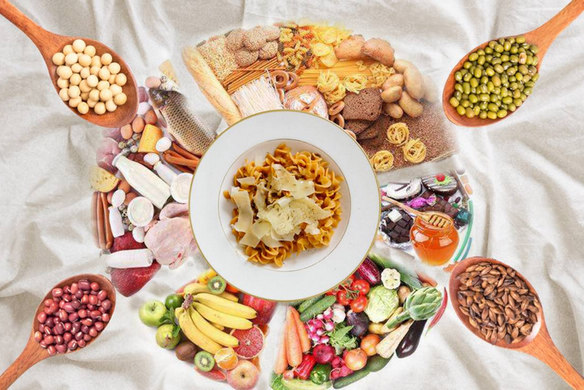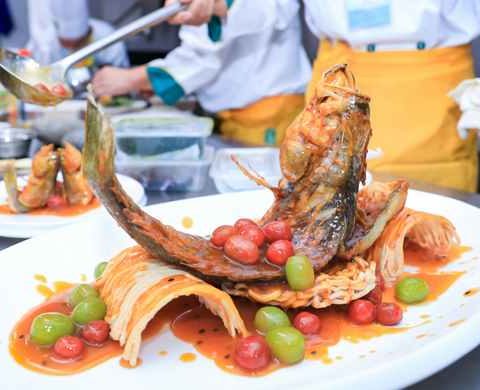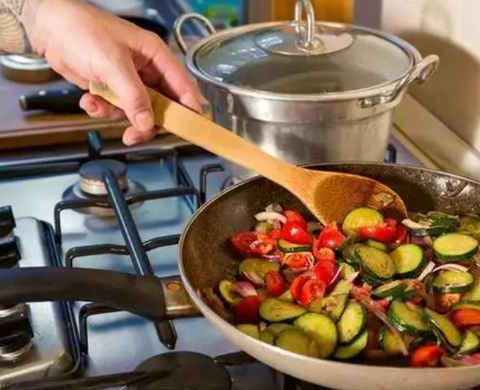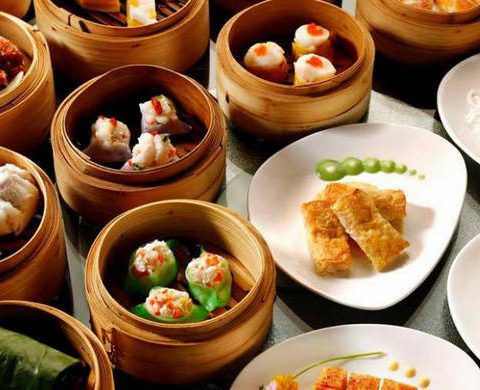People must consume a certain amount of food everyday to maintain their existence. According to statistical calculation, an individual eats several thousand times his weight in food in a lifetime. In all, water will account for over 75 tons of it, carbohydrates, over 17 tons, protein more than 2.5 tons and fat more than 1.3 tons. What role does food play in the human body? How can we make more efficient use of the foods we eat? Let’s look for the answer by looking at the relationship between diet and health.
The human body takes in seven basic substances from food: carbohydrates, fat, protein, vitamins, inorganic salts, cellulose and water. Each has its own particular function in the human physiology, but they are closely related to each other, coming together in an integrated unity, the human body.
Food nutrients and their sources and functions
Of the nutrients, carbohydrates and fats are the body’s major sourceof heat energy calories. 80-90% of the calories that a human body consumes are supplied by carbohydrates and fat. Grains and tubers are rich in carbohydrates, and they are widely available as foods. Fats are a rich source of caloric energy but they are not easily digested. Fats mixed with other foods can slow down the digestion of proteins and carbohydrates. The main function of protein is to supply raw material for the productionof tissue in the human body to form new tissue or to supplement and repair the tissue that is old or damaged.
Protein contained in tissue can be broken down into heat energy and is therefore, one of the. sources of energy in the human body. Protein existsin all forms of animal and plant tissue: in egg, milk, meats, grains such as rice, wheat, corn, in soya bean, potato, etc.
Healthy way of eating eggs
While many foods are extremely nutritious, they must be eaten in aproper manner so that the body may fully absorb them. The egg is a good example. It is known that the egg contains high quality proteins, calcium, phosphorus, iron, inorganic salts as well as vitamins A,D, B2 and so on. If eaten boiled or fried (in both cases, the egg should not be cooked over a high flame), it is an ideally nutritious food. But if eaten raw or half cooked, it is quite a different matter. According to medical investigation, the protein contained in raw egg has a kind of antibiotic protein which cannot be absorbed by the human body. The lab tests have shown that approximately 88% of all raw eggs contain bacteria, such as staphylococcus, colonbacillus, or streptococcus, which are harmful to the humanbody. It is very important therefore to know how to eat an egg or anyother food.
Vitamins: Their Functions and Sources
Vitamins are another nutrient. They neither produce heat nor form tissue in the human body and the body does not require great quantities of them everyday. In fact it needs less than 200 miligrams of them per day. But a deficiency in any one vitamin will affect the health causing a number of possible deficiency diseases.
Vitamin A promotes the growth of tissue and maintenance of normal eyesight. Vitamin A deficiencies will cause poor eyesight and possibly night blindness (nyctalopia). The deficiencies can be made up by eating foods which are rich in vitamin A such as liver, milk, egg, vegetables and fruit.
Beriberi is caused by an insufficient amount of vitamin B1 in the diet. People who suffer from beriberi should eat more lean meat, liver and other coarse grains or beans and bean products. Vitamin B2 deficiencies will lead to inflammationsof the mouth and of the skin.
Scurvy foods to eat
Scurvy is caused by insufficient intake of vatiamin C in the diet. Osteomalacia results from the lack of calcium, phosphorus and vitamin D. It is apparent therefore, that foods rich in vitamins, especially fresh vegetables and fruits, should be included in the daily diet to prevent certaindiseases.
Certain chronic conditions are not caused by a deficiency in nutrients but their cure still involves some regulation of the diet. For example, gastric ulcer sufferers should eat fixed quantities at fixed times taking more meals but eating less at each meal. They should choose easily digestible foods avoiding raw foods or foods that are too cold, oily or spicy. They should increase their intake of vitamin U which can be found incabbage and other vegetables and is available in pill form.
Diabetes foods to eat and avoid
Diabetics must control their consumption of high starch content foods and they cannot eat candy and between-meal sweets. Their diet must balance the proportions of sugar, fat and protein they consume. For non-staple foods, they may be allowed lean meats, fish, poultry,eggs, milk,bean products and vegetables which have a lower than 30% starch content. They can have milk (without sugar), hard-boiled eggs, nuts and seeds and fruits with low sugar content. Diabetics should eat foods rich in plant fibre and eat more onions. Onions contain a substance similar to the medicine tolbutamide which is used in diabetes cases and therefore is of some therapeutic use. Plant fibre can slow down the absorption of glucose preventing sudden increases of blood sugar and they satisfy the appetite.
Healthy eating to lower your blood pressure
Sufferers of hyperlipidemia, hypertension and arteriosclerosis, should eat low calorie, low fat and low cholesterol foods, light protein and vitamin rich foods. Foods which help lower lipid levels, blood pressure and prevent hardening of the arteries include wheat, corn, green beans, celery, rape, onion, garlic, mushroom, edible fungi, cabbage, lettuce, cauliflower, tomato, fish and bean products. Soybeans and soybean products are as nutritious as meat and have always been known as “plant meat”.They can, as part of the diet, lower blood serum, and cholesterol levels. Hypertension, coronary heart disease, diabetes cases should include soybean products in the diet.
Onion and garlic have been shown to lower lipid levels in the blood and increase fibrinolytic activity.
Eating onions and garlic is more beneficial to the body than unsaturated fatty acid which is clinically used in lipidemia cases. Regular consumption of onion and garlic can prevent and treat arteriosclerosis and heart disease.
Benefits of eating celery
Celery is rich in vitamin D, calcium and phosphorus. It has shown toproduce a tranquillizing effect and is beneficial to maintaining blood vessels. Celery is of some therapeutic use in curing hypertension, vascularsclerosis, neurasthenia, chyluria and infantile esteomalacia. Celeryor celery roots brewed with dates and consumed as a soup can lower serum cholesterol because dates are rich in vitamins and iron and the soup is like a natural vitamin pill.
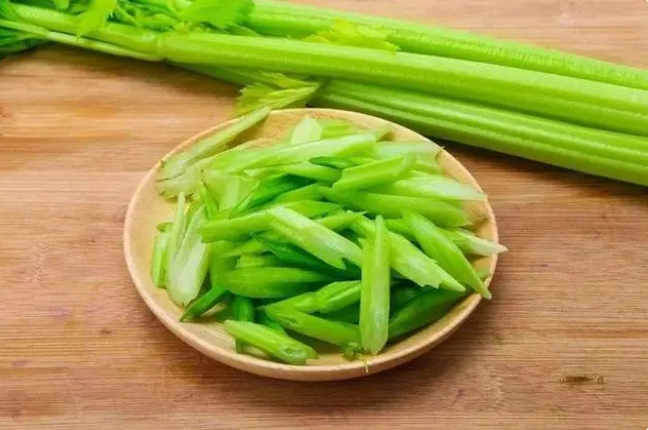
Good Nutrition for the Older Person
Older people should eat foods which contain iodine, chromium and vitamins A, E, C. Vegetables and fruits are a good source of vitamin C which prevents increased capillary permeability. It acts in shifting cholesterol deposits in the inner walls of blood vessels to the liver where they are broken down to cholic acid. Vitamin C is effective in preventing and treating arteriosclerosis.
Cabbage, lettuce and cauliflower contain vitamin E which has also been useful against arteriosclerosis, in lowering blood pressure, promoting cell reproduction and tissue replacement.

